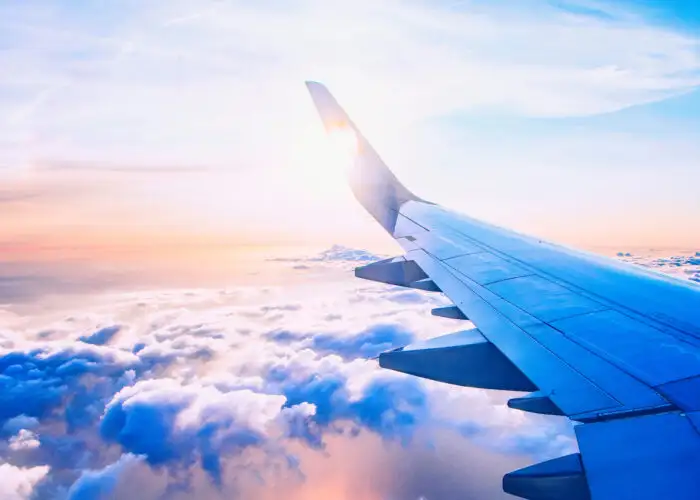
By any measure, it’s been an awful couple of years. While the recession—two consecutive quarters of negative GDP growth, according to economists’ definition—may be behind us, its painful effects will linger for years to come.
Perhaps no group has suffered more than the airlines. No group, that is, except their customers.
To an uncommon degree, the fortunes of travelers rise and fall with the fortunes of the airlines that serve them. And the fortunes of the airlines have been dismal indeed.
As a group, five of the nine largest U.S. airlines posted 2009 losses totaling almost $4 billion. American, which lost $1.5 billion in 2009 and $2.1 billion the year before, warned in its latest annual report that “It will be very difficult for the Company to continue to fund its obligations on an ongoing basis and to return to profitability if the overall industry revenue environment does not improve substantially.”
Such dire shareholder warnings arguably should be accompanied by comparably grim warnings to their passengers, who have borne the brunt of the airlines’ desperate measures to restore profitability. The airlines have been similarly derelict in suggesting ways to minimize the pain they’ve inflicted on their customers.
Loads High, Comfort Low
Load factor is an industry metric depicting the average percentage of seats occupied across an airline’s network of flights.
To airline managers, it’s a measure of efficiency—the higher the load factor, the better they’ve aligned the supply of seats with the traveling public’s demand for them.
To flyers, it’s a measure of discomfort—the fuller the plane, the longer the boarding process, the more cramped the seating, and the more intense the battle for space in the overhead storage bins.
And planes have been flying very full lately.
According to the DOT‘s Bureau of Transportation Statistics, the load factor for all U.S. passenger airlines was 72.9 percent in 2000, exceeding 80 percent only during the summer months between June and August.
For 2009, it had soared to 79.1 percent overall, and stood at a record 81.1 percent for domestic flights. The three largest mainline carriers—Delta, American, and United—all flew more than 80 percent full during the year.
What to do – If you’re claustrophobic or flying long distances, try reserving a seat in an exit row, which features more legroom. (Extra fees apply, natch.) If you fly often enough, it might be worthwhile paying $425 for an annual subscription to United’s Economy Plus, with up to five extra inches of legroom. Use frequent flyer miles to upgrade to first class.
“Sorry, Sir, You’ve Been Bumped”
Among the desperate measures that go hand in hand with the airlines’ financial desperation is overbooking, the practice of accepting more reservations for a given flight than there are seats on the plane. To adjust for expected no-shows, overbooking is a common practice, and perhaps even a rational one. The extent to which airlines overbook, however, varies with the times.
While sophisticated computer models have allowed the airlines to reduce their reliance on overbooking in recent years, they’ve resorted to more aggressive overbooking as the economy has floundered, choosing to risk higher compensation costs and negative P.R. in order to keep planes flying as full as possible.
The DOT reports that involuntary denied boarding—the worst-case result of overbooking—increased by 8.4 percent between 2007 and 2009, to 69,234 unlucky flyers, while the number of passengers flying only increased 1.8 percent.
The number of passengers bumped per thousand boardings—both voluntarily and involuntarily—increased by 6.4 percent, to about 1.2, over that same three-year period. That’s the highest rate since 1996.
What to do – Fly early in the day. That way, if you’re bumped, you have a better chance of getting on a later flight that same day. Check in early. When a flight is oversold, the airline uses check-in times among other criteria to choose bumpees.
Want a Blanket With That?
The run-up in fees is perhaps the most visible and widely decried side effect of the airlines’ financial woes, and the most direct link between the airlines’ funk and their passengers’ misery.
United, for example, reported ancillary revenues (the current industry term for baggage fees and the like) of approximately $1.1 billion, a $141 million increase from 2008. That’s more than a billion dollars that wasn’t included in the ticket prices displayed in bold type in the airline’s advertising headlines, that nevertheless came out of consumers’ pockets.
While the airlines self-justify the a-la-carte approach to pricing (you get what you pay for), consumers grumble about “nuisance fees” and complain of pricing “surprises” when the total ticket cost is finally displayed.
What to do – To avoid sticker shock, factor in all pertinent fees when comparison-shopping. And while fees have become a fact of travel life, some airlines are worse than others (such as Spirit, which just announced a fee to carry a bag onboard, and US Airways), and some are markedly better (Southwest).
The Lesser Rewards of Loyalty
The same profit-maximizing logic accounts for the airlines’ increased stinginess in making seats available to members of their loyalty programs trying to redeem their miles for free trips.
American, which has been an industry leader in the loyalty area and operated the largest program until the Delta-Northwest merger, gave away 5.2 million one-way travel awards in 2009, around 1 million fewer than in 2008. It would be one thing if the decreases were just in the absolute numbers of award travelers, but they’re not. Award travelers represented 8.9 percent of American’s boarded passengers in 2009, down significantly from 9.7 percent the previous year.
A similar story played out at United, which reported a decrease from 2.3 million Mileage Plus awards in 2008 to 2.1 million in 2009, and a decrease in award travelers from 9.1 percent of the carrier’s passengers in 2008 to 8.3 percent in 2009.
At Southwest, 2.4 million awards were issued in 2009, down from 2.8 million in 2008. In 2009, award travelers represented 7.7 percent of the company’s passengers, down from 8.3 percent in 2008.
And at US Airways, the number of awards fell from 0.9 million in 2008 to 0.8 million in 2009, although awards as a percentage of total passengers remained flat at about 4 percent.
What to do – Be flexible on dates and times when booking awards. If no award flights are available on the airline’s website, call the airline’s reservations center. A customer service agent can often find seats that aren’t offered for booking online, or devise an itinerary that circumvents award bottlenecks. While there may be a fee to book by phone, it’s worth it if it makes the difference between using miles and paying cash.
Elite Perks, Downgraded
Further undermining the loyalty effect of the airlines’ mileage programs has been the dilution of elite benefits.
During 2009, the larger airlines offered double elite-qualifying miles (EQMs) for no less than six months. Even with the falloff in travel, those extra EQMs must have swelled the ranks of elite-status flyers, thereby intensifying competition for upgrades to first class, even as the supply of first-class seats has been pared back.
What to do – The surest way to increase the odds of snagging an elite upgrade is to upgrade your elite status, from entry-level elite to mid-tier status, or to top-tier status. To do so, however, will require logging at least 50,000 or 75,000 EQMs on the host airline or its closest airline partners.
Pretzels, Everyone?
If airline food was really as bad as some suggest, its absence might be considered a blessing.
But flyers still wax nostalgic for those leaden slabs of cannelloni, apparently unironic Laughing Cow cheese wedges, and stale Ritz crackers that not so long ago were included in the price of an airline ticket.
Whatever its virtues, real or imagined, when Continental’s new policy takes effect this fall, complimentary meal service on coach flights within the continental U.S. will go the way of onboard piano bars and miniskirted flight attendants.
What to do – Although some airlines sell meals or snacks on longer flights, you’re better off, financially and nutritionally, bringing a sandwich from home or grabbing a to-go meal from an airport restaurant.
Nastiness, No Sure Recipe for Profitability
Of course, this isn’t a just case of mean-spirited corporate goliaths gleefully beating up on their defenseless customers.
The moves are driven by financial desperation, as profit-starved companies do whatever it takes to maximize revenue in the short term, never mind the long-term consequences.
It’s worth pointing out, however, that the airline that has remained the most resolutely customer-friendly in its strategy and tactics, Southwest, has also posted the best financial performance during these fraught times.
In fairness to the mainline carriers, Southwest never promised anything more than a bag of pretzels and a Coke, so there was no meal service to offload. But fees remain minimal, in spite of the potential windfall, a fact the airline justly self-promotes in its advertising. And the discounter scored a respectable 6th out of 19 airlines in the DOT’s overbooking rankings (lower is better).
What to do – As consumers, we get to vote on how much airlines profit from our business, and even whether they survive. Vote for the good guys.
The Outlook: Slow Gain, More Pain
So what can travelers expect from the airlines in the coming months and years? There’s no telling for sure. But you’re not likely to find a more reliable indicator than the unemployment rate—a lagging indicator of economic improvement overall—which has been slowly improving. At 9.7 percent nationally, it remains painfully high and is expected to remain well above normal levels for the foreseeable future. By that measure, travel relief will be a long time in coming.
What to do – Keep your expectations aligned with the airlines’ anticipated behavior—low, in other words—and purchase and consume travel accordingly.
And, because travelers need all the mood-improvers they can get, take consolation in the fact that in inflation-adjusted dollars, airline tickets today are extremely cheap. Until you factor in the fees, that is.
We hand-pick everything we recommend and select items through testing and reviews. Some products are sent to us free of charge with no incentive to offer a favorable review. We offer our unbiased opinions and do not accept compensation to review products. All items are in stock and prices are accurate at the time of publication. If you buy something through our links, we may earn a commission.
Related
Top Fares From Indianapolis, IN
Today's Top Travel Deals
Brought to you by ShermansTravel
Shop and Save with Country Inns...
Patricia Magaña
 Hotel & Lodging Deals
Hotel & Lodging Deals
$229 -- Chicago: Discounted Rates and...
Francesca Miele
 Hotel & Lodging Deals
$229+
Hotel & Lodging Deals
$229+
$188 -- Honolulu: Save on Oceanview...
Abigail Lamay
 Hotel & Lodging Deals
$188+
Hotel & Lodging Deals
$188+






